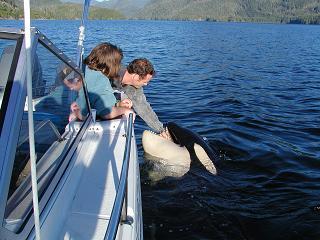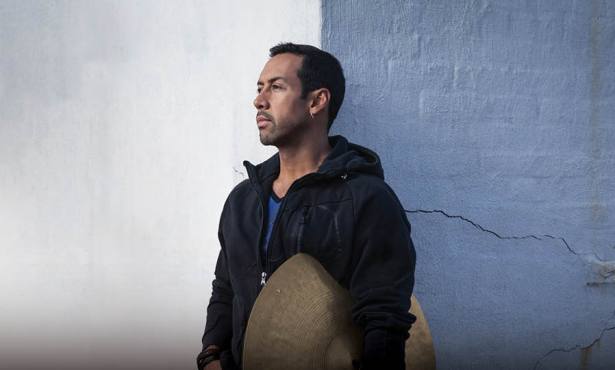Saving Luna
SBIFF Documentary Tells Tale of Little Lost Orca

Documentary filmmakers Suzanne Chisholm and Michael Parfit are no strangers at covering controversial stories replete with human conflict and high emotions. They’ve reported on the wrenching effects of the Bosnian civil war and documented the plight of African refugees in Tanzania. Yet it is apparent that few subjects have challenged their own journalistic ideals and personal morals quite as much as the enigmatic protagonist in their new film Saving Luna.
On assignment from Smithsonian Magazine, the husband and wife team traveled to the remote fjord of Nootka Sound on the west coast of Vancouver Island, B.C., in late spring 2004. They had come to report on the Canadian government’s attempt to capture a wayward young orca called Luna, who had won the affections of many but inspired hostility among others. Chisholm and Parfit wound up living in that wilderness community for three years, and became advocates for a whale.
Now, the filmmakers bring the charismatic orca to the Santa Barbara Film Festival in a moving first person account, giving audiences an eye-opening glimpse into an iconic interspecies relationship that literally broke the rules. As heralded by the film’s trailer, “There is a wall that normally stands between humans and wild beings. Luna broke it.”
In Saving Luna, scientists are baffled by the presence of the solitary orca, policy makers are frustrated by the dilemma he poses, and locals are delighted when a gregarious Luna makes startling contact with people and boats.
“It was incredibly surreal,” a young woman tells the audience. “He wanted to see us as much as we wanted to see him.”
Luna’s uncanny desire to socialize with humans is depicted with astonishing footage shot both above and below the water’s surface, and also recounted through candid and colorful interviews. But not all the locals are enamored with the rambunctious toddler from the sea. Some area boaters and fisherman become irate with Luna’s mischievous antics and threaten to kill him.
What ensues is a complex battle of ideologies that posits science, politics, and cultures at an impasse. Saving Luna navigates deftly through these difficult waters, portraying the conflict from all sides. Parfit narrates from one perspective to another, “But, there are other ways of seeing the world.”
For the indigenous first nation band of Nootka Sound, Luna represents an esteemed and honored animal species, and the spirit of a dead chief. Perceiving that the government’s endeavor to capture and relocate the orca with its pod is nothing but a veiled attempt to place Luna in an aquarium, the tribe resolves to thwart the effort.
Mesmerizing camera work captures the tribe as they paddle out in wooden canoes to rally for Luna’s freedom. The sound of chanting fades beneath Parfit’s narrative, evoking a mythical image: “Luna followed the song and they turned into the wind. An ancient people trying to make a modern legend of sea and spirit with a little whale.”
Luna’s powerful bond with Nootka’s indigenous people is nothing short of dumfounding. In exploring this fable-like connection, the filmmakers make a compelling case that friendship, or something akin to it, could indeed keep Luna from harm.
Ultimately, things get quite personal when Parfit takes to the water as a kind of unauthorized steward to protect the whale. “It was agonizing,” conceded Parfit. “And yet we felt so strongly about it because of all the information we had gathered. We felt that when Luna was with us, he was safe.”
A poignant film that questions the boundary between humans and a wild being, the documentary is bound to raise the eyebrows of anthropomorphic hardliners while enchanting those who embrace the natural world and its complexities.
Saving Luna is a must for anyone who loves the sea and its endearing and endangered creatures. In fact, actress Cate Blanchett might want to consider dodging her own awards ceremony Saturday night to catch this one instead.
4-1-1 Saving Luna was awarded Best People and Animals film at last year’s Jackson Hole Wildlife Film festival. The film is scheduled to screen at the Santa Barbara International Film Festival, Sat., Jan., 26, at 7 p.m., and again on Tues., January 29, at 12:30 p.m.
Stephan Michaels is an award-winning freelance journalist who covered the saga of Luna the killer whale for several publications.



